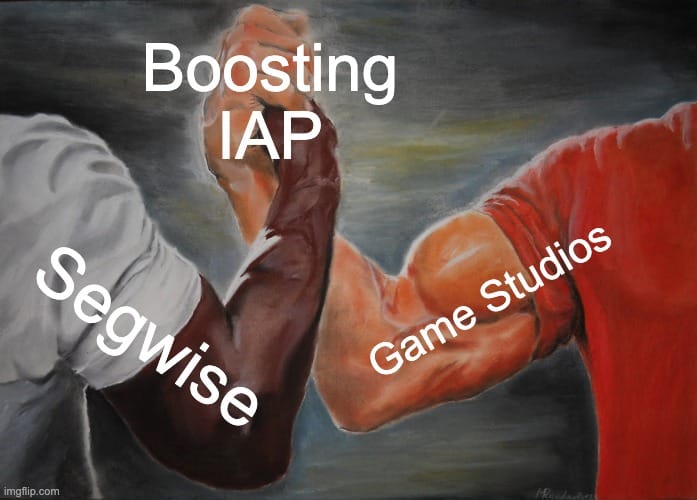Personalization Techniques for In-App Purchases in Mobile Games

Introduction to Personalization in Mobile Games
Personalization in mobile games is a powerful strategy that significantly enhances user engagement and drives in-app purchases (IAPs). By tailoring the gaming experience to individual players' preferences and behaviors, game developers can create a more immersive and satisfying experience. Personalization, at its core, is the process of dynamically adapting a game's features, mechanics, and narratives to align with each player's unique characteristics, play patterns, and progression. This approach acknowledges that every gamer is distinct, with varying motivations, skill levels, and expectations. Consequently, a one-size-fits-all approach often falls short, leading to disengagement, churn, and missed monetization opportunities. This blog will explore the importance of personalization, various techniques, and best practices for implementing effective personalization strategies in mobile games.
Different Personalization Techniques for Mobile Games
Mobile game developers can leverage a variety of personalization techniques to create immersive, tailored experiences for their players. These techniques encompass various aspects of the game, including:
1. User-Specific Offers and Pricing
One of the most effective personalization strategies involves presenting players with customized in-game offers and dynamic pricing models. By analyzing individual spending habits, progression rates, and engagement levels, developers can craft tailored offers that resonate with each player's unique preferences and willingness to pay.
For instance, a casual player who has yet to make any in-app purchases might be enticed by a discounted bundle of virtual currency or a limited-time offer for a cosmetic item. In contrast, a dedicated "whale" player may respond better to exclusive, high-value offers that facilitate faster progression or grant access to premium content.
2. Dynamic Content and Gameplay Experiences
Personalization can extend beyond mere offers and pricing, shaping the very fabric of the gameplay experience itself. Developers can leverage player data to dynamically adjust game difficulty, pacing, and content delivery, ensuring that each player encounters a challenge level that aligns with their skills and preferences.
For example, a novice player might benefit from a more gradual difficulty curve, with ample tutorials and hand-holding, while an experienced gamer could relish a steeper challenge that tests their mettle. Similarly, the game's narrative, dialogue, and visual elements could adapt to resonate with players' cultural backgrounds, interests, or previous in-game choices.
3. Personalized Notifications and Engagement Prompts
Timely and relevant notifications can be powerful tools for re-engaging players and driving IAPs. By leveraging contextual data, such as a player's location, recent in-game activities, and historical engagement patterns, developers can deliver personalized prompts, reminders, and limited-time offers that pique their interest and encourage further interaction.
For instance, a player who has been inactive for a few days might receive a tailored notification highlighting a new content update or a special event that aligns with their play style. Alternatively, a player who has recently progressed through a challenging level could be presented with a celebratory offer or a chance to purchase a power-up that enhances their newfound abilities.
4. Tailored Gameplay Mechanics and Progression Systems
Personalization can extend beyond cosmetic elements and offers, delving into the very core of a game's mechanics and progression systems. By analyzing player data and leveraging machine learning algorithms, developers can dynamically adjust gameplay elements such as difficulty scaling, resource distribution, and reward structures to create a tailored experience that keeps each player engaged and motivated.
For example, a player who excels at combat encounters might encounter more frequent and challenging battles, while a player who prefers exploration could be presented with a more expansive world filled with hidden treasures and secrets. Similarly, the rate at which players earn virtual currency, unlock new abilities, or progress through the game's narrative could be tailored to their individual play patterns, ensuring a consistent sense of accomplishment and reward.
How Personalization Boosts In-App Purchases
The implementation of personalization techniques can yield significant benefits for mobile game developers, particularly in terms of driving IAPs and maximizing revenue streams. Here's how personalization can boost in-app purchases:
1. Increased User Engagement and Retention
By delivering tailored experiences that resonate with individual players' preferences and needs, personalization fosters deeper engagement and prolonged retention. When players feel that the game understands and caters to their unique playstyle, they are more likely to remain invested and continue playing for extended periods.
Engaged and retained players not only represent a captive audience for IAP offers but also have a higher propensity to make in-game purchases. As players progress through the game and become more invested in their virtual journey, they are more likely to consider purchasing virtual items, power-ups, or premium content that enhances their experience.
2. Higher Conversion Rates for Personalized Offers
Personalized offers and pricing models have the potential to significantly increase conversion rates for IAPs. By presenting players with offers that align with their individual preferences, spending habits, and progression levels, developers can tap into their inherent motivations and desires, making the purchase decision more appealing and compelling.
For example, a player who has consistently engaged with a game's social features might be more inclined to purchase virtual gifts or cosmetic items that allow them to express their individuality within the game's community. Conversely, a player focused on progression and achievement might be swayed by offers that grant access to exclusive content, power-ups, or time-saving boosters.
3. Improved Player Satisfaction and Loyalty
Personalization can also foster a deeper sense of player satisfaction and loyalty, ultimately leading toincreased lifetime value (LTV) and long-term revenue streams. When players feel that the game understands and caters to their unique preferences, they are more likely to develop a strong emotional connection and remain invested in the game's ecosystem.
Satisfied and loyal players are not only more likely to make repeated in-app purchases but also serve as powerful advocates for the game, driving organic growth through word-of-mouth recommendations and positive reviews. This virtuous cycle can lead to a self-sustaining player base and a consistent revenue stream for the game developer.
Steps to Implement Personalization Techniques
Implementing personalization techniques in mobile games requires a strategic and data-driven approach. Here's a step-by-step guide to help developers effectively integrate personalization into their games:
Collect and Analyze Player Data: The foundation of personalization lies in gathering and analyzing comprehensive player data. This includes demographic information, in-game behavior, progression rates, purchase histories, and engagement patterns. Developers can leverage analytics tools, in-game telemetry, and user feedback to build a robust data repository.
Segment Players Based on Preferences and Behaviors: Once player data has been collected, developers can segment their user base into distinct groups based on shared preferences, behaviors, and characteristics. This segmentation process can leverage techniques such as cluster analysis, decision trees, or machine learning algorithms to identify patterns and correlations within the data.
Define Personalization Strategies and Objectives: Based on the identified player segments, developers can define personalization strategies and objectives that align with their overall business goals. This may include increasing IAP conversion rates, boosting player retention, or fostering deeper engagement with specific game features or mechanics.
Develop Personalized Content and Experiences: With a clear understanding of player segments and personalization objectives, developers can begin creating tailored content, offers, and experiences. This may involve developing dynamic pricing models, crafting personalized narratives or visual elements, or adjusting gameplay mechanics and progression systems to cater to individual preferences.
Implement Personalization Mechanisms: Once the personalized content and experiences have been developed, developers must integrate them into the game's codebase and infrastructure. This may involve implementing real-time data processing pipelines, content delivery systems, and personalization engines that can dynamically serve tailored content to players based on their individual profiles.
Test and Iterate: Personalization is an iterative process that requires continuous testing, monitoring, and refinement. Developers should conduct A/B testing, gather player feedback, and analyze engagement and revenue metrics to evaluate the effectiveness of their personalization strategies. Based on these insights, they can iterate and optimize their approaches to deliver increasingly tailored and engaging experiences.
Conclusion: The Impact of Personalization on In-App Purchases
Personalization is a crucial strategy for driving in-app purchases and ensuring the success of mobile games. By tailoring the gaming experience to individual players' preferences, developers can increase engagement, improve retention, and boost revenue. Implementing effective personalization techniques requires careful data collection and analysis, but the benefits are well worth the effort.
By delivering tailored experiences that resonate with individual players' preferences, motivations, and behaviors, developers can unlock a wealth of benefits, including increased engagement, higher conversion rates, and improved player satisfaction and loyalty.
Enhance Your Game's IAPs with Segwise.ai
At Segwise.ai, we understand the immense potential of personalization and have developed AI Agents that empower game studios to implement effective personalization strategies and optimize their IAP offerings. Our AI Agents are designed to root cause game metrics, identify causal metric drivers, and enable game studios to act on LTV opportunities faster.
With Segwise.ai, you can:
Gain Granular Insights into Player Behavior: Our AI Agents leverage advanced machine learning algorithms and natural language processing techniques to analyze vast amounts of player data, including in-game behavior, purchase histories, and demographic information. This allows you to identify patterns, correlations, and unique player segments with unprecedented granularity.
Deliver Personalized Experiences at Scale: Armed with these insights, our AI Agents can help you craft personalized experiences tailored to each player's unique preferences and motivations. From dynamic pricing and targeted offers to personalized content delivery, Segwise.ai empowers you to deliver personalization at scale.
Optimize IAP Conversion Rates: By continuously monitoring player responses and analyzing IAP conversion data, our AI Agents can identify opportunities for optimization and refine your personalization strategies. This iterative approach ensures that your IAP offerings remain relevant and effective, maximizing revenue potential.
Stay Ahead of the Curve: As the mobile gaming industry continues to evolve, personalization will become increasingly crucial for maintaining a competitive edge. With Segwise.ai, you can stay ahead of the curve and leverage the latest advancements in AI and machine learning to deliver cutting-edge personalized experiences.

Join the growing community of game studios that are harnessing the power of Segwise.ai to unlock the full potential of personalization and drive IAP revenue growth. Unleash the power of personalization with Segwise.ai and elevate your game's success to new heights!

Comments
Your comment has been submitted successfully!